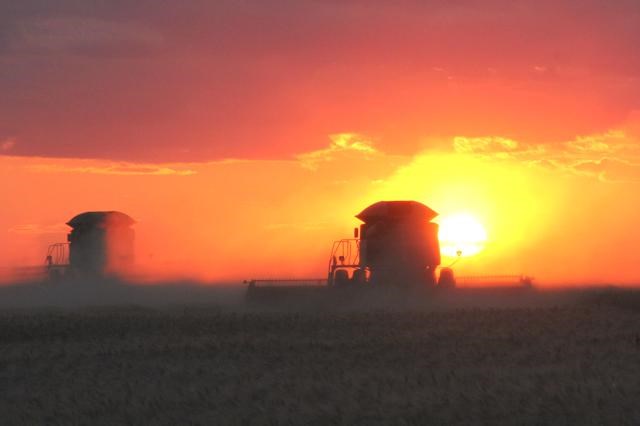Harvest is essentially complete for producers in the province with 98 per cent of the crop now in the bin, reported Saskatchewan Agriculture for the period ending October 16. This figure is up from 94 per cent the previous reporting week.
The five-year and ten-year averages for this time of year are 94 per cent harvested. A year ago, frequent snow and rain continued to halt harvest progress for most of the province. Harvest progress remained at 81 per cent combined. It would be some time before most producers could return to the field, some would not resume combining until the ground froze.
This year, there are still some crops, such as flax, soybean and canola, left to harvest, and most of these producers will only need another week or two of warm and dry conditions to finish. The southeastern, southwestern and east-central regions all have 99 per cent of the crop combined, while the west-central region has 98 per cent. The northeastern region has 96 per cent of the crop in the bin and the northwestern region has 95 per cent.
According to crop, 100 per cent of winter wheat, fall rye, lentils and peas are combined, 99 per cent of the canaryseed, mustard and chickpeas are harvested, 98 per cent of the durum, spring wheat, oats and barley, 95 per cent of the canola, 91 per cent of the soybeans and 87 per cent of the flax have been combined.
Most of the province received no moisture this past week, although areas in the northwest received small amounts of rain and snow. Meadow Lake reported 11 mm. Topsoil moisture conditions have remained relatively unchanged over the last few weeks, and significant moisture will be needed to replenish both the topsoil and subsoil before next spring. Across the province, topsoil moisture on cropland is rated as 43 per cent adequate, 40 per cent short and 17 per cent very short. Hay land and pasture topsoil moisture is rated as 33 per cent adequate, 45 per cent short and 22 per cent very short.
The majority of crop damage this past week was due to strong winds and wildlife such as geese and deer. Hard frosts last week have helped dry crops such as flax. Producers across the province are busy completing combining and fall work, moving cattle and hauling grain and bales. SaskPower received six reports last week of farm machinery coming in contact with electrical equipment, totaling 13 for October.
In southwestern Saskatchewan, harvest is essentially complete in the region as 99 per cent of the crop is in the bin. The five-year average for this time of year is 96 per cent. Some producers are waiting on crops such as flax and soybean to dry down. Crops in the southwest are 100 per cent harvested for winter wheat, spring wheat, fall rye, barley, mustard, soybeans, field peas and lentils, 99 per cent for durum, canola and chickpeas, oats, 98 per cent for canaryseed and 86 per cent for flax.
No rain was reported in the southwest region last week. The Moose Jaw area has reported the most precipitation (235 mm) in the region since April 1.
Topsoil moisture conditions remain about the same as last week. Significant moisture will be needed to replenish both the topsoil and the subsoil moisture before next spring. Topsoil moisture on cropland is rated as 26 per cent adequate, 48 per cent short and 26 per cent very short. Hay land and pasture topsoil moisture is rated as 22 per cent adequate, 40 per cent short and 38 per cent very short.
The majority of crop damage this past week was due to strong winds. A hard frost in the southwest region last week helped crops such as flax dry down. Producers are busy finishing harvest, moving cattle, hauling grain and completing fall work such as picking rocks and working fields.



